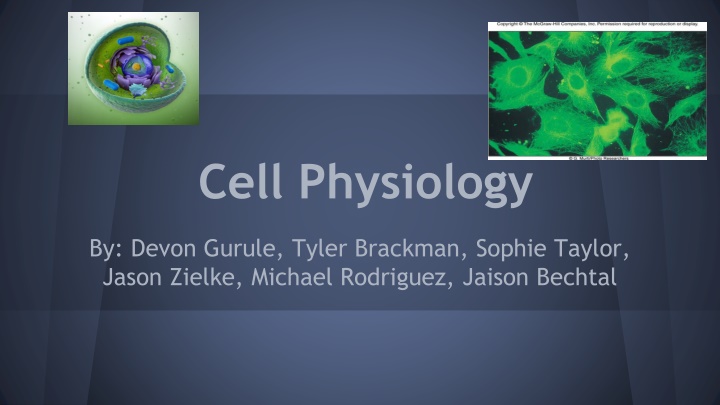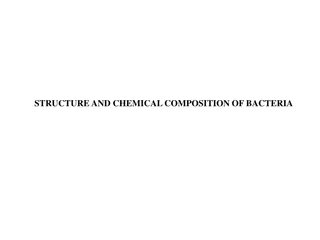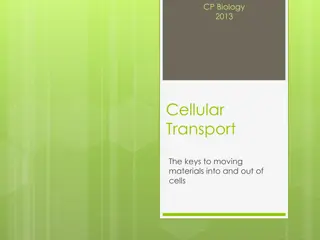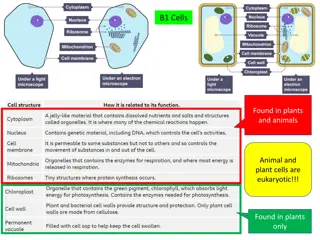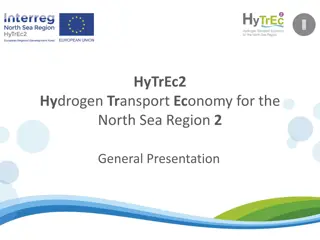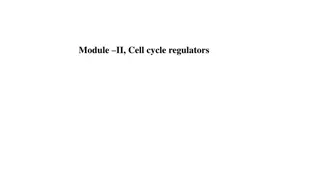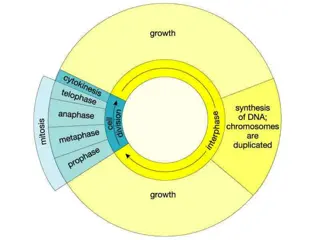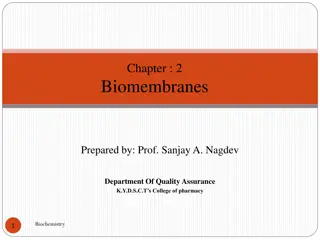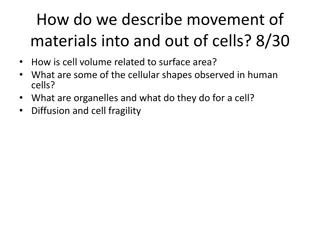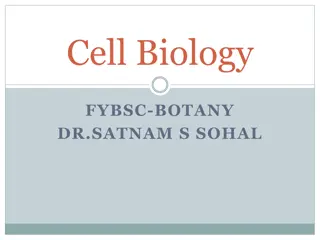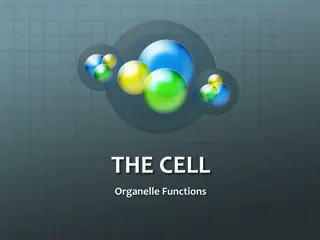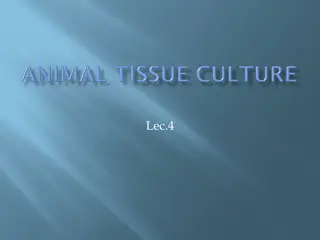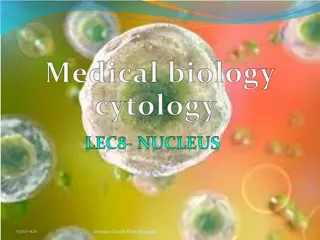Cell Physiology and Transport
This resource covers cell physiology, eukaryotic cell structure, cell transport mechanisms like passive and active transport, and includes explanations on diffusion, osmosis, and cell transport in isotonic, hypertonic, and hypotonic solutions.
Download Presentation

Please find below an Image/Link to download the presentation.
The content on the website is provided AS IS for your information and personal use only. It may not be sold, licensed, or shared on other websites without obtaining consent from the author.If you encounter any issues during the download, it is possible that the publisher has removed the file from their server.
You are allowed to download the files provided on this website for personal or commercial use, subject to the condition that they are used lawfully. All files are the property of their respective owners.
The content on the website is provided AS IS for your information and personal use only. It may not be sold, licensed, or shared on other websites without obtaining consent from the author.
E N D
Presentation Transcript
Cell Physiology By: Devon Gurule, Tyler Brackman, Sophie Taylor, Jason Zielke, Michael Rodriguez, Jaison Bechtal
Introduction to Cells Parts of the Cell Theory: 1. Cells are the basic units of structure for all life on Earth 2. All living things have cells 3. ALL cells come from preexisting cells
Eukaryote Cell Structure and Function 1. Unlike Prokaryotic cells, Eukaryotes contain a nucleus -Contains a nuclear envelope, chromosomes, nucleolus and enclosed by a membrane 2. Contains several organelles, each is specialized to perform an individual task 3. Every cell in the host contains the same DNA 4. Can reproduce with both mitosis and meiosis
Cell Transport Definition: The movement of particles in or out of a cell and takes place because cells are trying to maintain balance or reach equilibrium Passive Transport moves molecules from an area of high concentration to an area of low concentration Active Transport moves molecules from an area of low concentration to an area of high concentration
Cell Transport (Passive Transport) Diffusion: The general term for the movement of molecules from a High to Low Facilitated Diffusion: Passive movement along the cell membrane with the help of proteins Osmosis: The diffusion of water molecules *Cell membranes are completely permeable to water with help of aquaporins* (Ex. Lab with the egg where it shrunk in syrup and grew in vinegar) Isotonic Solution: When the concentration of the solution outside the cell and inside the cell are EQUAL; No size change Hypertonic Solution: The concentrations of solute molecules outside the cell is HIGHER than the inside of the cell; Cell will shrink Hypotonic Solution: The concentrations of solute molecules outside the cell is LOWER than the inside of the cell; Cell will swell
Cell Transport 2. Isotonic- 1. Hypertonic- 3. Hypotonic-
Cell Transport (Active Transport) Molecular Transport: The cell transports molecules from a low concentration area to a high concentration. This uses energy Exocytosis (EXIT): Vesicles made by the cell, fuse with the cell membrane, and then releasing their contents OUT of the cell Endocytosis (ENTER): Process of taking materials INTO the cell by means of infoldings or pockets of the cell membrane that pinch off into vesicles within the cell
Cell Diversity Shape: shape of a cell depends on its function Size: cells vary in size from microscopic to macroscopic Internal Organization: Some cells contain organelles to organize their inside material Structure: (Fluid Mosaic Model) - mainly consists of lipid bilayer (fat) - some proteins sporadically placed inside Function: Controls what enters and exits the cells - selectively permeable membrane - separates internal and external environments
Vocab Cell- smallest unit of life, what makes up organisms Lipid bilayer- what makes up the cell s membrane, one layer is hydrophobic, one is hydrophilic Diffusion- exchange of materials between cell and its environment Equilibrium- when the concentration of a solute is the same through a system Osmosis- diffusion of water through a selectively permeable membrane Isotonic- there is the same solute: solvent ratio in and out of the cell Hypertonic- more solute outside the cell than in, the cell will shrink Hypotonic- There is more solvent outside the cell than inside, cell swells Facilitated diffusion- diffusion that uses proteins to help Active transport- Transport from low to high, uses energy Passive transport- transport from high to low, no energy used
Vocab- Organelles Organelles- specialized subunit within a cell that has a specific function, and it is usually separately enclosed within its own lipid bilayer. Chromosome- structure of DNA, protein, and RNA found in cells. Cytoplasm- the material within a living cell cell wall- rough outer layer of cell for support Membrane- filters what goes in and out of cell ER- synthesizes materials. Rough er makes proteins Ribosome- makes proteins, found on ER Vacuole- stores food, waste, or water Nucleus- brain of cell, surrounded by nuclear envelope Cytoplasm- the material within a living cell, excluding the nucleus. Golgi- Packages and modifies proteins Mitochondria- Powerhouse of a cell, energy source
Vocab Prokaryote- a microscopic single-celled organism that has neither a distinct nucleus a distinct nucleus with a membrane nor other specialized organelles. Eukaryote- an organism consisting of a cell or cells in which the genetic material is DNA in the form of chromosomes contained with a distinct nucleus. Selective permeability- When a cell membrane decides what can go in/ out Pinocytosis- the ingestion of liquid into a cell by the budding of small vesicles from the cell membrane Phagocytosis- the ingestion of bacteria or other material by phagocytes and amoeboid protozoans. Endocytosis- the taking in of matter by a living cell by invagination of its membrane to form a vacuole. Exocytosis- a process by which the contents of a cell vacuole are released to the exterior through fusion of the vacuole membrane with the cell membrane. Tissue- A group of specialized cells Organ- A group of tissue Organ system- A combination of organs that work together to perform tasks
Vocab- Scientists Hooke- Discovered cells under a microscope, named them cell because they looked like the cells that monks slept in Leeuwenhoek- Followed on Hookes footsteps and solidified the evidence Shwann- Found microbiotic organisms in pond water, determined that life is everywhere
Ted Ed The History of the Cell Theory
Quiz 1. The cell membrane s lipid bilayer consists of ___________. A) Carbohydrates B) Phospholipids C) Nucleic Acids 2. The shape of a cell is determined by its _________. A) DNA B) pH C) function 3. Cells are the basic units for all _________. A) life B) plants C) proteins 4. An animal cell is an example of a(n) _________ cell. A) prokaryotic B) eukaryotic C) bacteria
Quiz 5. Which of the following is not true about the cell theory? A) some cells come from preexisting cells B) all cells are living C) all cells make up life on earth 6. Which of these transport processes does not require ATP? A) passive transport B) endocytosis C) exocytosis 7. All eukaryotic cells have _________. A) flagella B) vacuole C) nucleus
Quiz 8. Which scientist gave the Cell its name? A) Leuwenhooke B) Hooke C) Schwann 9. The _______ makes proteins for the cell. A) Rough ER B) mitochondria C) ribosome 10. A specialized subunit within a cell that has a specific function is called a A) Organelle B) Cytoplasm C) Nucleus
Quiz Answers 1. B 2. C 3. A 4. B 5. A 6. A 7. C 8. B 9. C 10. A
Bibliography (Links to images) http://human-physiology---ashley-vg.wikispaces.com/Cell+Physiology http://www.desimd.com/know-your-body/reproductive-system/cellthe-nucleus-of-life http://www.medicalsciencenavigator.com/compartments-in-anatomy-and-physiology https://www.boundless.com/chemistry/gases/kinetic-molecular-theory/gas-diffusion-and-effusion/ http://introducingorganelles.weebly.com/mitochondria-and-golgi-apparatus.html http://garronespinoza88.blogspot.com/2013/10/fluid-mosaic-model.html
